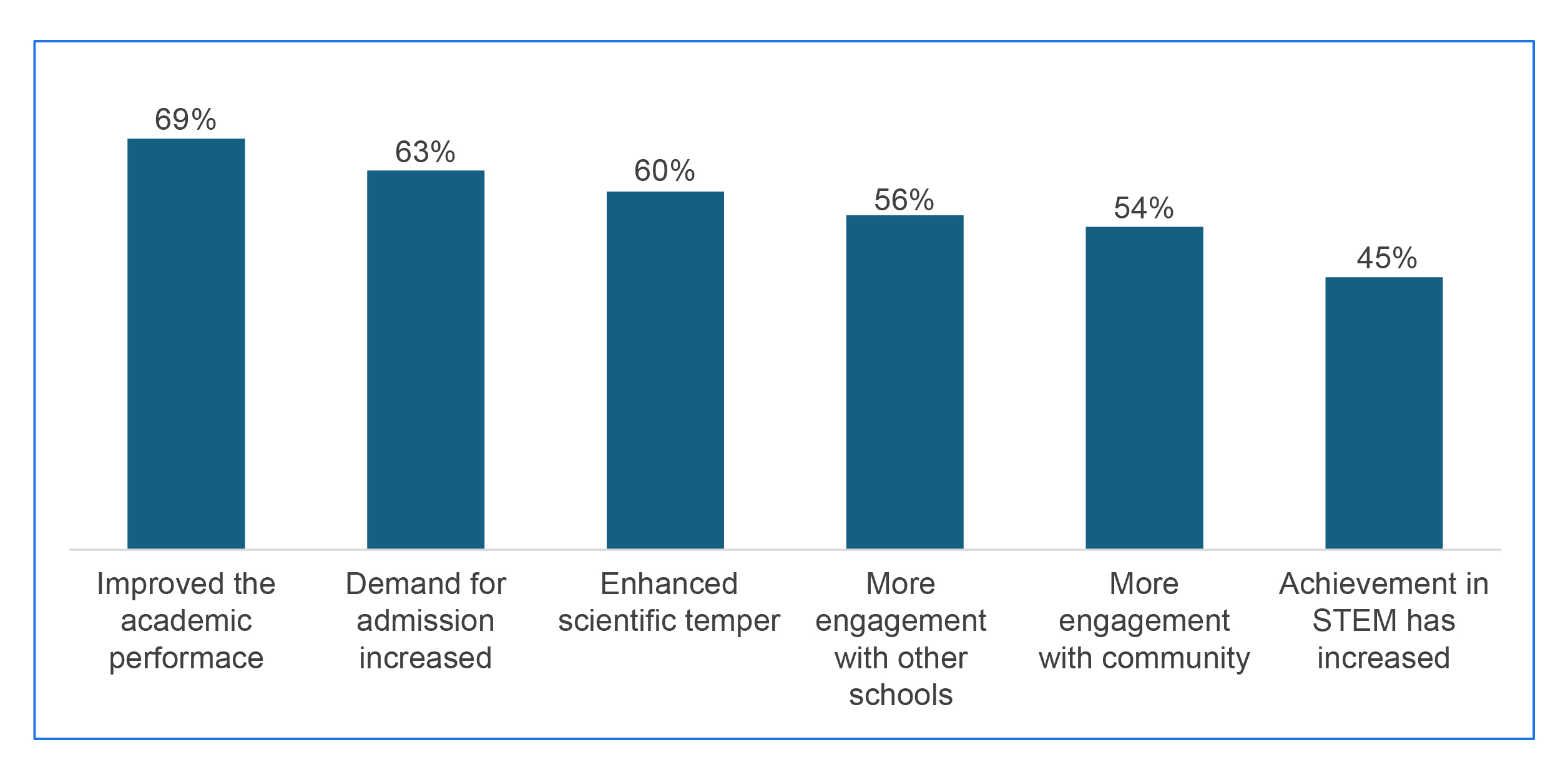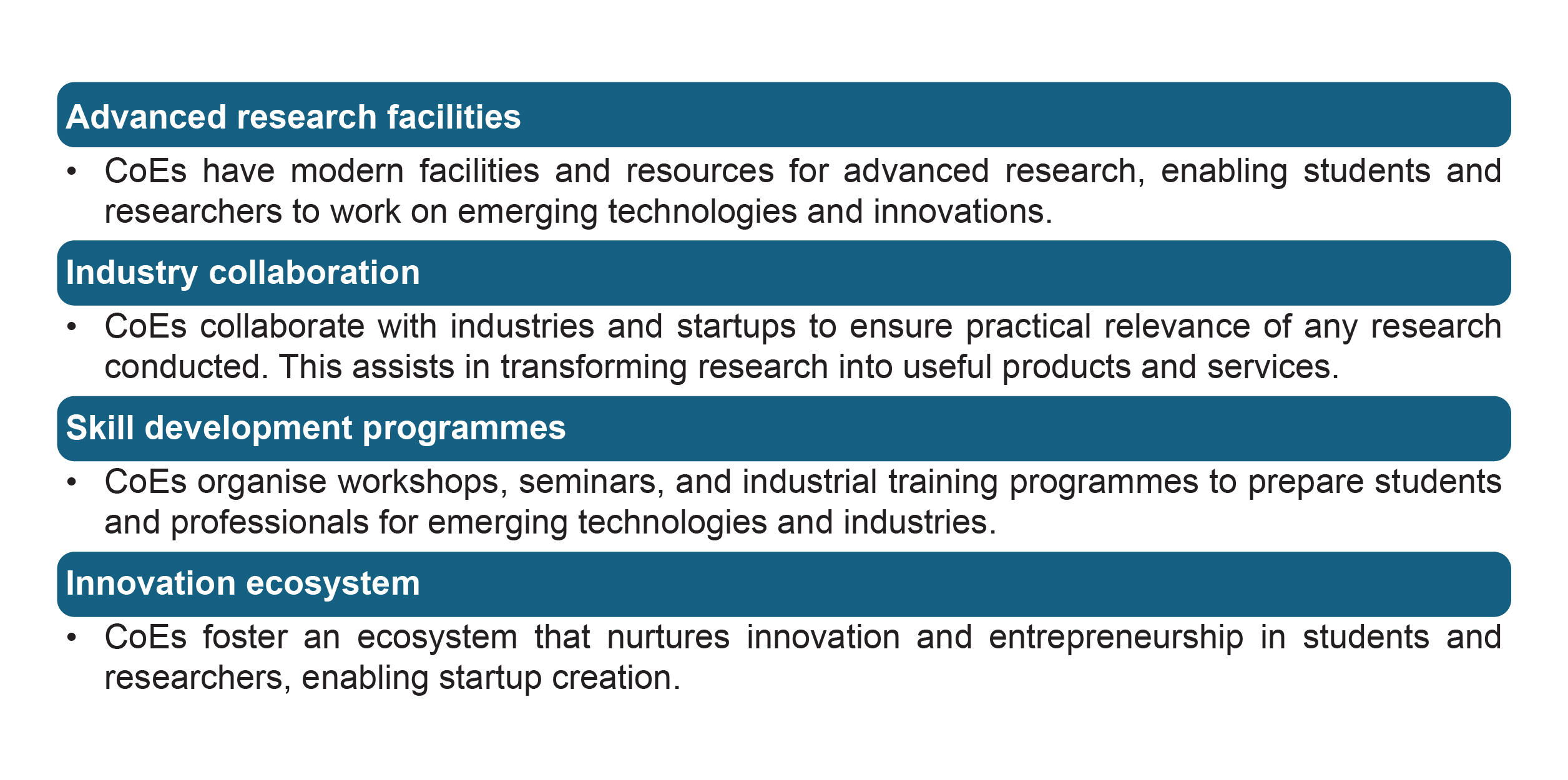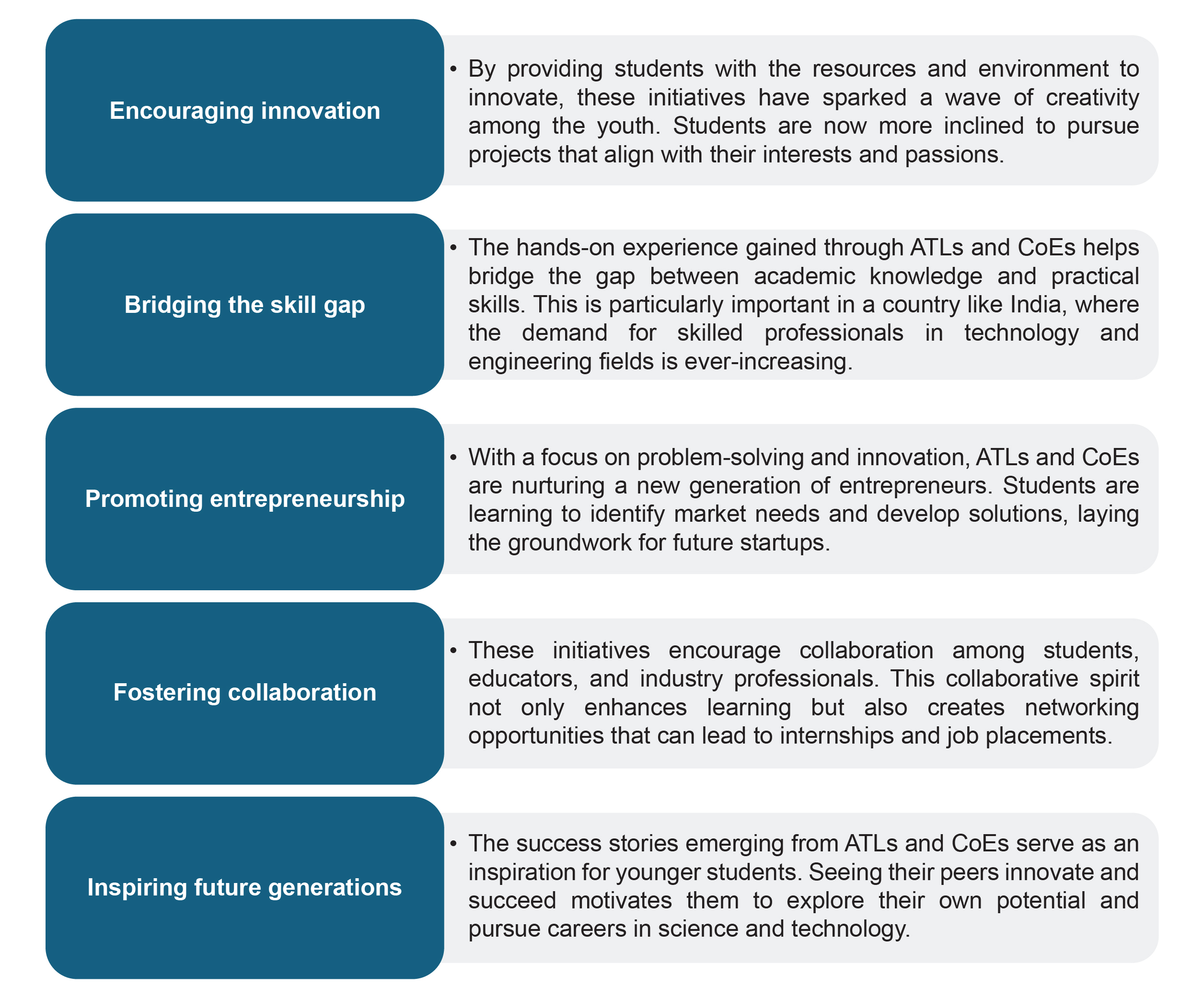SEARCH
RECENT POSTS
Categories
- Agriculture (32)
- Automobiles (18)
- Banking and Financial services (33)
- Consumer Markets (51)
- Defence (6)
- Ecommerce (21)
- Economy (68)
- Education (13)
- Engineering (6)
- Exports (21)
- Healthcare (24)
- India Inc. (8)
- Infrastructure (29)
- Manufacturing (28)
- Media and Entertainment (15)
- Micro, Small & Medium Enterprises (MSMEs) (15)
- Miscellaneous (30)
- Perspectives from India (33)
- Pharmaceuticals (4)
- Railways (4)
- Real Estate (16)
- Renewable Energy (17)
- Research and Development (9)
- Retail (1)
- Services (6)
- Startups (15)
- Technology (53)
- Textiles (6)
- Tourism (13)
- Trade (5)
Investing in India’s Future: Atal Tinkering Labs & Centres of Excellence

- Aug 05, 2025, 14:40
- Technology
- IBEF
In a rapidly changing global landscape, where innovation and technology drive growth, India stands at a pivotal juncture. The nation's youth, with their boundless potential and creativity, is the key to unlocking a prosperous future. Recognising this, the Government of India has launched initiatives like Atal Tinkering Labs (ATLs) and Centres of Excellence (CoEs) to foster a culture of innovation and entrepreneurship among students.
The vision behind ATLs
In 2016, NITI Aayog launched Atal Innovation Mission (AIM) to cultivate an innovative mindset among school students holistically through ATLs. The aim was to equip young minds to explore, experiment and create. Through mentorship and access to tools and technologies, ATLs encourage students to put the theory they learn to practice.
Significance of ATLs for India
Combining the traditional teaching methodologies with today's experiential learning is key to creating a unique blended education system in India. Keeping in mind the demands of the growing economy and global growth in innovation development, the Government of India embarked on a noble mission to create an ecosystem that nurtures futuristic skills like complex problem solving, critical thinking, adaptive learning, computational skills in children, with a vision to create one million neoteric innovators, through the ATL initiative. The ATL initiative is harnessing the inherent creativity and problem-solving abilities of children throughout India, providing them with the skills needed for the future. Access to a variety of ATL resources empowers them to brainstorm and develop viable solutions to significant issues affecting their communities.
Features
- Hands-on learning: ATLs supply students a location to work on innovative projects that ignite their interests. Outfitted with resources such as 3D printers, robotics kits, and electronics, students can experiment and bring their notions to life.
- Interdisciplinary approach: The labs advertise a cross-disciplinary technique to studying, combining science, technology, engineering, mathematics (STEM). This rounded instruction pattern inspires resourcefulness and critical thinking.
- Mentorship and collaboration: ATLs regularly team up with neighbourhood industries, educational institutions, also guide students through their projects, fostering a community of innovation.
- Focus on problem solving: Students are motivated to pinpoint real-world problems with cutting-edge solutions. This problem-solving mindset is crucial for developing future leaders moreover and entrepreneurs who will change the world.
Budget allocations:
- The government demonstrates substantial financial support for the ATL programme due to its dedication to STEM education advancement.
- From FY16–19, the Indian government allocated Rs. 1,000 crore (US$ 115 million) to create 10,000 ATLs in various locations until FY20.
- The Ministry of Education's budget allocation for FY25 increased 6.22% YoY to Rs. 1,28,650 crore (US$ 14.8 billion). This funding will help establish 50,000 ATLs in government schools by 2030, fostering innovation and practical learning among students.
Transforming schools with ATLs: Where learning meets innovation

Source: Athena Infonomics Private Ltd.
Centres of Excellence: A step further
While ATLs focus on school students, CoEs target higher education institutions and research organisations. These centres are designed to promote advanced research and development in various fields, such as artificial intelligence, robotics, and biotechnology.
Key features of CoEs

Impact on education and skill development
The establishment of ATLs and CoEs has had a profound impact on the Indian education system and skill development landscape.
Here are some of the key benefits:

Challenges and the way forward
Even though the programmes have made progress, they still face issues. Critical areas that require attention include maintaining consistent quality across ATLs and CoEs, securing funding, and keeping pace with rapid technological shifts.
To address these challenges, stakeholders are focusing on:
Regular training for educators: Plans like India's National Teacher Training Programme centre on arming guides with cutting learning approaches and technologies. For example, blended education combining tradition with electronic assets boosts student involvement and benefits. Amplified funding and means are core to strengthening the educational framework. The administration allocated considerable money toward National Education Policy 2020's aim to double public investment to 6% of gross domestic product. Joint efforts like those with Tata Trusts also furnish resources for innovative educational plans.
Increased funding and resources: These investments enhance not just facilities but access to superior tools and technologies, allowing pupils hands-on research experiences. Instructional staff persist in adapting to persistent educational flux. National training schemes concentrate preparation on current scholarly strategies and innovations. For instance, merging standard guidance with electronic resources heightened student participation and results. Enhanced money and assets are pivotal for enriching the educational structure. The government contributed sizable finances toward National Education Policy 2020's aspiration to multiply public investment to 6% of gross domestic product. Collaborations involving entities like Tata Trusts in addition furnished assets for pioneering educational initiatives. Such investments better convenience as well as broaden admission to quality tools and technologies, allowing students hands-on learning experiences.
Monitoring and evaluation: Effective assessment of educational programmes is reliant on rigorous monitoring and evaluation schemes. The National Assessment and Accreditation Council (NAAC) in India offers a systematic methodology for appraising educational institutions. By examining an array of indicators, such as scholarly accomplishment rates and utilisation of assets, stakeholders can pinpoint mastery areas and deficiencies that need to be addressed. For instance, research undertaken by the World Bank underlined that the academies with properly working assessment approaches demonstrated heightened amounts of scholar realisation. Similarly, colleges that sought constant student assessment and administered short-term corrective measures often observed improved test scores over successive years. Meanwhile, studies found resource-strict schools that practiced infrequent evaluation tended to struggle with persistent poor performance.
Expanding reach: To guarantee quality education for all, establishing ATLs and CoEs in rural and underprivileged areas is essential. Initiatives like ‘Digital India’ help create digital infrastructure in remote areas to help reduce the urban and rural divide. For instance, mobile learning labs were introduced in rural schools to ensure access to learning resources and STEM activities to boost innovation. By focusing on these areas, educational programmes can help students in rural areas make use of modern education.
Investing in ATLs and COEs equates to investing in India’s future. By nurturing a culture of innovation and entrepreneurship among the youth, these initiatives are laying the foundation for a skilled workforce capable of driving economic growth and technological advancement. As India continues to evolve in the global arena, empowering its youth through education and innovation will be pivotal in realising the nation’s full potential. The journey has just begun, and with sustained efforts, the possibilities are limitless.
















